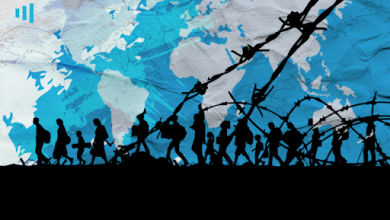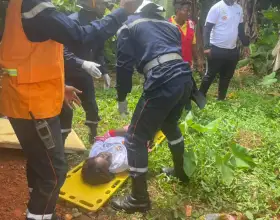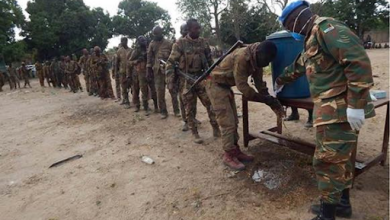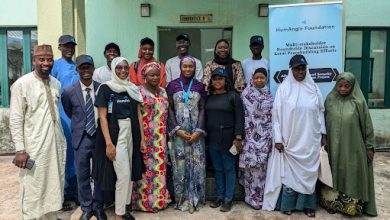Sexual Violence: Save The Children Raises Alarm Over Safety Of 72 Million Children
Save the Children International has raised alarm over the rising number of sexual abuse cases on children in conflict zones.
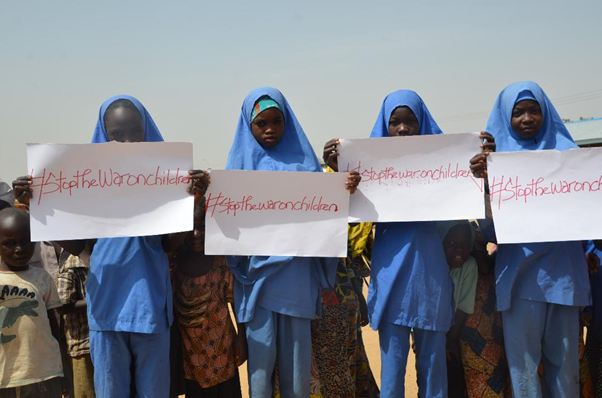
Save the Children, an international NGO, said 72 million out of the 426 million children living in conflict areas live near armed groups that perpetrate sexual violence on them.
In a new report released on Thursday and seen by HumAngle, one out of six children is at the risk of sexual violence globally.
The report, Weapon of War: Sexual violence against children in conflict –which includes the very first analysis of the risk of sexual violence against children living in conflicts between 1990-2019 shows that children are 10 times more at risk now than three decades ago (8.5 million in 1990).
The countries where children face the greatest risk of sexual violence in conflict are Colombia, Iraq, Somalia, South Sudan, Syria, and Yemen.
The organisation explained that the sexual violence risk includes; rape, sexual slavery, forced prostitution, pregnancy, forced sterilisation, forced abortion, sexual mutilation, sexual abuse, and sexual torture at the hands of armed groups, government forces and law enforcement.
It stated that survivors face several challenges compounded in conflicts, such as the absence of systems and processes to report the crime, stigma, fear of retaliation, and a lack of support and services.
The UN has verified more than 20,000 cases of conflict-related sexual violence against children since 2006.
Its most recent report on children and armed conflict included 749 confirmed cases of sexual violence against children in 2019 alone. Of these, 98 per cent were committed against girls, and the cases attributed to state forces almost doubled from 2018.
However, the verified cases are likely to represent only a fraction of actual cases, as revealed by Save the Children’s new research.
Inger Ashing, CEO of Save the Children International, said in a statement that, “Sexual violence is underreported at the best of times, but even more in conflicts areas—especially among children.”
“On average, only two cases of sexual violence against children living in conflict areas were reported every day in 2019.”
“But we know that rape and other forms of abuse have been increasingly used against children in conflict – which is why these two cases a day only represent the tip of the iceberg. Many more child victims of sexual violence we’ve never heard of but who also urgently need support. Any form of sexual violence against a child is horrendous and must stop immediately.”
“The fact that sexual atrocities committed by state forces against children nearly doubled from 2018 to 2019 is shameful. Governments and their forces should and must do more to protect the most vulnerable in any conflict, including children.”
Ashing added that the report revealed a bigger proportion of armed groups that carried out sexual violence in conflict in the last seven years also targeted children.
Of the 54 conflicts globally, 22 involve reported use of sexual violence against civilians, while 15 involve armed groups explicitly reported as having perpetrated sexual violence on children, the report said.
“While boys only made up 2 per cent of UN-reported cases of sexual violence in 2019, they have been strategically targeted during the last years in conflicts in the Central African Republic, the Democratic Republic of Congo, South Sudan, and Syria. In Afghanistan, most cases reported in 2019 related to boys, where they’re often exploited and enslaved by men in positions of power.”
Sexual violence is used as a weapon of war on children and other civilians to terrorise them, spread fear and intimidation for political and military gain, ethnically cleanse or humiliate an ethnic group, or punish civilians for suspected support of opposing forces.
The trauma it inflicts can have long-lasting physical, psychological, social, and economic effects.
The physical act’s brutality can be especially damaging for children whose bodies aren’t fully developed. Girls might suffer uterine prolapses, fistula, and other injuries to their reproductive system and face complications and death due to early pregnancy and unsafe abortions. Both girls and boys risk urinary and anal damage and exposure to sexually transmitted diseases that, left untreated, can cause long-term harm and even death.
“Over 72 million children in the world today are living in proximity to armed groups that use sexual violence against minors is simply and utterly unacceptable. The international community can and must do more.”
Save the Children called on world leaders, security experts, donors, members of the UN, and NGOs to put children at the centre of any international action against sexual violence in conflict, including boosting services and programmes that acknowledge and meet their special needs.
The charity also called for an end to the impunity of sexual violence against children by strengthening laws and enforcing them while holding perpetrators to account.
It advocated for a strengthened and better-coordinated collection of data on sexual violence against children in conflict.
To ensure that these demands are met, the organisation also called for increased funding.
“The use of sexual violence as a weapon of war is abhorrent,” added Ashing. “Survivors of these atrocities deserve more from the international community. We must come together to ensure this grave violation is wiped out once and for all.”
Support Our Journalism
There are millions of ordinary people affected by conflict in Africa whose stories are missing in the mainstream media. HumAngle is determined to tell those challenging and under-reported stories, hoping that the people impacted by these conflicts will find the safety and security they deserve.
To ensure that we continue to provide public service coverage, we have a small favour to ask you. We want you to be part of our journalistic endeavour by contributing a token to us.
Your donation will further promote a robust, free, and independent media.
Donate HereStay Closer To The Stories That Matter

